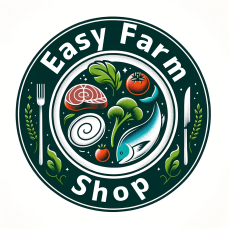In recent years, there has been a profound shift in how people perceive and consume food. The farm-to-table movement has emerged as a powerful force in the culinary world, revolutionizing the way we think about where our food comes from and how it reaches our plates. This movement is not merely a trend but a fundamental reconnection to the origins of our sustenance, promoting sustainability, supporting local economies, and enhancing the flavour and nutritional value of our meals.
Origins and Philosophy of the Farm to Table Movement
The farm-to-table movement traces its roots back to the late 20th century, although its principles resonate deeply with traditional food systems that have sustained societies for centuries. It emphasizes transparency and traceability in food production, advocating for a direct relationship between farmers and consumers. Instead of relying on industrial-scale agriculture and distant supply chains, the farm-to-table approach prioritizes local, seasonal, and sustainably grown ingredients.
Local Sourcing and Community Support
At the heart of the farm-to-table movement is the idea of supporting local farmers and producers. By sourcing ingredients from nearby farms and artisans, restaurants and consumers reduce their carbon footprint and strengthen the resilience of local food systems. This support for small-scale agriculture helps preserve farmland, promotes biodiversity, and fosters economic vitality in rural communities.
Restaurants that embrace the farm-to-table philosophy often form partnerships with local farmers, establishing direct channels for procuring fresh, high-quality ingredients. Community-supported agriculture (CSA) programs further bridge the gap between producers and consumers, allowing individuals to subscribe to regular deliveries of seasonal produce directly from local farms.
The Importance of Food Traceability
Food traceability plays a pivotal role in the farm-to-table movement for several important reasons:
- Transparency and Accountability: Traceability allows consumers to know exactly where their food comes from and how it was produced. By providing detailed information about the farm or source of origin, as well as the methods used in cultivation, harvesting, and processing, traceability fosters trust and accountability in the food supply chain. Consumers can make more informed choices about the products they purchase, supporting ethical and sustainable practices.
- Quality Assurance: Traceability helps ensure the quality and safety of food products. By tracking each step of the production process, from farm to table, producers can quickly identify and address any issues that may arise, such as contamination or spoilage. This proactive approach to quality assurance reduces the risk of foodborne illnesses and maintains the integrity of the food supply.
- Risk Management: In the event of a foodborne illness outbreak or product recall, traceability allows for swift and targeted responses. By tracing the origins of affected products, authorities can contain the spread of contamination and mitigate potential health risks to consumers. Timely and accurate traceability systems minimize the impact of food safety incidents on public health and consumer confidence.
- Supply Chain Efficiency: Traceability enhances the efficiency and resilience of the food supply chain. By providing visibility into the movement of food products from producers to distributors to retailers, traceability systems help streamline logistics and reduce waste. Producers can better manage inventory levels, optimize distribution routes, and minimize losses due to spoilage or overstocking.
- Sustainability: Traceability supports sustainability initiatives by promoting responsible sourcing and production practices. By tracing the origins of ingredients, consumers can choose products that align with their values, such as organic, fair trade, or locally grown options. This increased demand for sustainable products incentivizes producers to adopt environmentally friendly practices, such as organic farming, biodiversity conservation, and water stewardship.
- Market Differentiation: For farmers and producers participating in the farm-to-table movement, traceability can be a valuable marketing tool. By highlighting the transparency and authenticity of their products, they can differentiate themselves in a crowded marketplace and attract discerning consumers who value quality and integrity. Traceability certification schemes, such as organic or fair trade labels, provide additional assurances to consumers and strengthen brand reputation.
Overall, food traceability is essential for building trust, ensuring safety, promoting sustainability, and driving innovation in the farm-to-table movement. By embracing traceability systems and standards, stakeholders across the food supply chain can work together to create a more transparent, resilient, and ethical food system for all.
Sustainability and Environmental Impact
Industrial agriculture, with its reliance on monocropping, chemical inputs, and extensive transportation networks, has taken a toll on the environment. The farm-to-table movement offers a more sustainable alternative, promoting practices such as organic farming, crop rotation, and minimal pesticide use. By reducing the distance food travels from farm to table, this approach helps lower greenhouse gas emissions and mitigate climate change.
Furthermore, small-scale farms practicing regenerative agriculture can contribute to carbon sequestration, enhancing soil health and biodiversity. By prioritizing heirloom and heritage varieties, farmers participating in the farm-to-table movement also help preserve genetic diversity and protect endangered plant species.
Flavour, Nutrition, and Culinary Creativity
One of the most compelling aspects of the farm-to-table movement is its emphasis on flavour and nutritional quality. Freshly harvested fruits and vegetables, ripened in the sun and delivered without delay, offer unparalleled taste and texture. Locally raised meats and poultry, free from hormones and antibiotics, boast superior flavour profiles and higher nutritional value.
Chefs who champion the farm-to-table ethos celebrate the diversity of seasonal ingredients, crafting menus that reflect the changing bounty of the land. By embracing the constraints of local availability, these culinary innovators inspire creativity and experimentation in the kitchen, elevating traditional recipes with modern twists.
Challenges and Opportunities
While the farm-to-table movement has gained momentum in recent years, it faces several challenges on its path to widespread adoption. Economic barriers, including the higher cost of sustainably produced food and limited access to local markets, can pose obstacles for both farmers and consumers. Additionally, issues such as food waste and the need for infrastructure improvements in rural areas require collective action and investment.
However, these challenges also present opportunities for innovation and collaboration. Initiatives aimed at improving distribution networks, supporting small-scale producers, and educating consumers about the benefits of local food can help overcome barriers to adoption. Government policies that incentivize sustainable farming practices and promote food sovereignty are also crucial for the long-term success of the farm-to-table movement.
Conclusion
The farm-to-table movement represents a return to the roots of food culture, emphasizing the importance of connection, sustainability, and flavour. By supporting local farmers, reducing environmental impact, and celebrating the diversity of seasonal ingredients, this movement offers a path towards a more resilient and equitable food system. Whether dining at a neighborhood restaurant or shopping at a farmers’ market, embracing the farm-to-table ethos is not just a culinary choice but a commitment to nourishing both body and soul, one delicious meal at a time.

